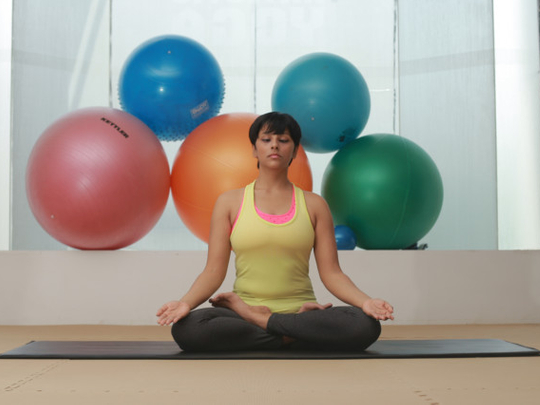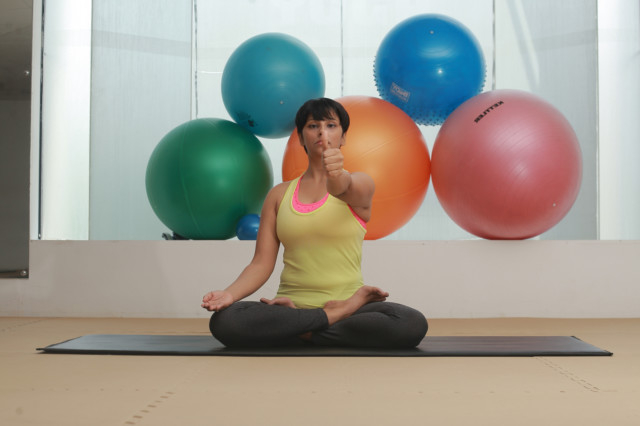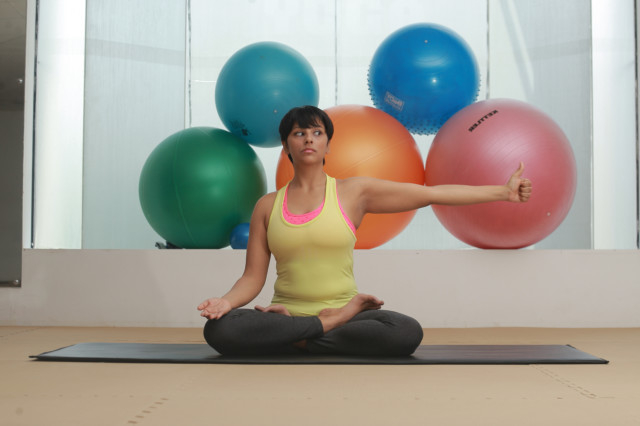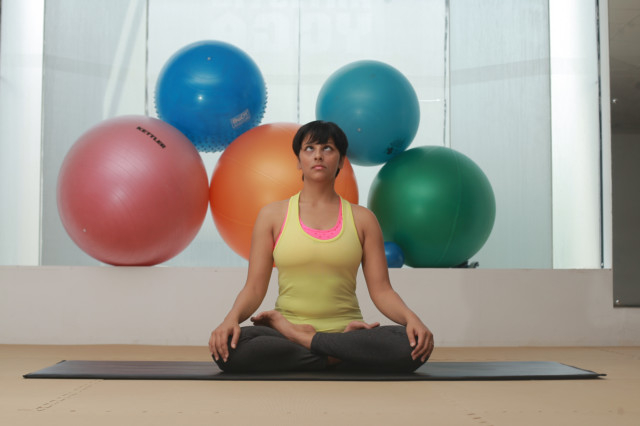
Yoga and music have combined in recent times to deliver such resounding health benefits that even science is recognising its credibility. Almost everyone at some time or the other has got absorbed, exhilarated, thrilled or healed by music.
The unstruck sound is Anahata. As the ancient texts describe it, the first sounds heard when you tune into your inner music is chini (like the sound of that word), second is chini chini, third is a bell chime, fourth rises like the conch, fifth is like the lute, sixth is the sound of cymbals, seventh like the melody from a flute, eighth is the strike of a drum, ninth of double drums and tenth is like a rumble of thunder breaking in the skies.
This sound is heard in the right ear. It travels from the left to the right ear.
BENEFITS
1 Releases toxic emotions.
2 Calms and stills the spinning mind.
3 Connects you to your inner potential by sharpening your sight, sense of smell, taste, touch and hearing.
4 Your listening skills improve — you become a keen listener to what others say and you also start listening to your own body.
5 You become sensitive to sounds, energies, thoughts, vibrations and most of all your own body and internal sounds.
6 You become integrated and capable of connecting to the universal intelligence.
7 This heightened awareness leads you to live a life of balance, abundance and harmony.
A tenacious regime is all it takes to tune into this inner symphony.
YOGA PRACTICES THAT HELP CHANNEL AND DIRECT ENERGY INWARDS:
PRELIMINARY PRACTICES
1 Sit comfortably in any posture with your back straight. Watch the flow of your breath, as it passes in and out of your nostrils. You will notice a difference in the way your breath flows through each nostril. Do this for two minutes and then start regulating your breath by making your inhaling stronger than your exhaling. Continue for two minutes and then start expanding your exhalation. Continue for two more minutes. By now your breath would have deepened and will be flowing smoothly and regularly.
2 In the second practice use your thumb as a point of focus, as it moves so do your eye balls (make sure you do not turn your head while doing this exercise). Start with two rounds and build up to five. (See photos 1-4).
Both these preliminary practices help you get centred and your mind to become one-pointed.
An added benefit is the effect it has on your eye muscles. It is a highly recommended and effective practice for weak eye sight.
MUDRAS TO BE PRACTISED:
AGOCHARI MUDRA commonly known as NASIKAGARA DRISHTI (Nose tip gazing)
Maintain a comfortable posture with eyes open and take your gaze to the tip of your nose. Keep your focus sharp and do not blink your eyes, breath remains slow and regular.
SAMBHAVI MUDRA commonly known as BHUMADHYA DRISHTI (Eyebrow centre gazing)
In this the eyes are focused on the eyebrow centre. Both eyeballs move inwards to focus upon the centre point between your eyebrows. Do this with eyes open in the beginning and once you start getting your focus, you can enjoy this practice, with eyes closed.
Both these mudras should be practised for five minutes, each round to be of no more than 30 second duration.
These techniques are used specifically to sharpen, cleanse and hone your senses, so that they become ready to tune into Anahata or the unstruck sound.
This is a 12-part yoga series titled “Gateway to a Great Way of Life”. This is an interactive series, in which we will bring you practical DIY techniques. If you have questions regarding an ailment or how yoga can help you overcome emotional obstacles, write to tabloid@gulfnews.com
For more information go to gulfnews.com or artisticyoga.com
Tip of the Week: Women have different bio-rhythms from men. The ebb and flow of their energies is directly connected to their menstrual cycles which are propelled by a medley of hormones and these processes are also experienced by them as sound waves. The menstrual time is special to women, an opportunity to tune into their inner music, and achieve a tranquil state of harmony with themselves. The practices mentioned in this column should be started by women at the end of their menstrual cycles and they peak as does their cycle. Starting on September 13 at 4.45pm, women now participate in a unique programme called ‘Celebrating the Feminine’. For more information call 800-YOGA(9742).
Next week: The love hormone lies in the twists and turns of yoga
















